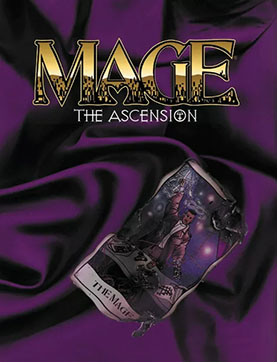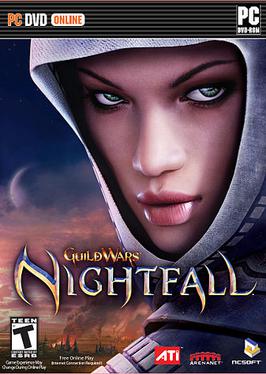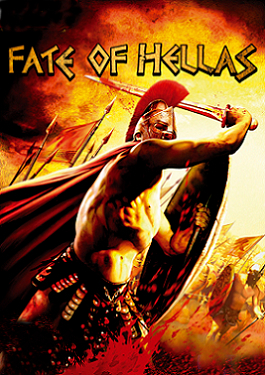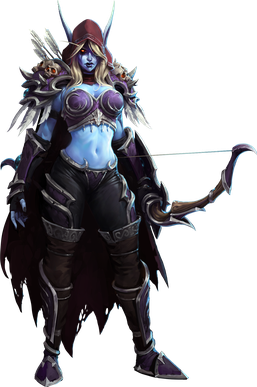Summary
The year is 435 Tz, and every faction in the land is at war. If it continues there won't be much land left to fight over. The strain on the world's magical energy is literally tearing the land apart. The land's fate lies in your hands. You must earn the respect of all the races of the land, and together you must fight to keep the land alive. Travel the land earning respect and engage in battles along your journey leading up to an all out war.
You are one of five heroes whose destiny is to unite the Mage Knight Factions, in a war that will decide the fate of the world. You must gather forces and march upon the castle of Rokos, home of the Solonavi, to stop their evil spells from destroying the planet. Along the way you will encounter many challenges, and face many foes. Meet a cast of varying sorts like Wrath, the young mage, Jarok'Din, the battle-hardened troll, and Vargana, the high and mighty sorceress. Fight in many locales, forests, mountains, swamps, and more in over 70 maps. Are you ready to face your destiny?

Mage: The Ascension is a role-playing game based on World of Darkness, published by White Wolf Game Studio in 1993. The characters portrayed in the game, referred to as mages, have the ability to use magic. Magic in Mage incorporates ideas from mystical practices, science, and religion. In Mage, a mage's ability to change reality is based on what they believe rather than on a static system.

Mage Knight is a miniatures wargame using collectible figures, created by WizKids, Inc, and is the earliest example of what is now known as a collectible miniatures game. The game was designed by founder Jordan Weisman along with Kevin Barrett. The game is the first to use WizKids' Clix system, combining roleplaying and wargaming elements with aspects of collectible card games. Mage Knight achieved success after it was introduced in 2000.

Replay value is the potential of a video game or other media products for continued play value after its first completion. Factors that can influence perceived replay value include the game's extra characters, secrets and alternate endings. The replay value of a game may also be based entirely on the individual's tastes. A player might enjoy repeating a game because of the music, graphics, gameplay or because of product loyalty. Dynamic environments, challenging AI, a wide variety of ways to accomplish tasks, and a rich array of assets could result in a high replay value.

Kain is a character and the main protagonist and title character of the Legacy of Kain video game series. First introduced in Blood Omen: Legacy of Kain in 1996, he was created by Denis Dyack and Silicon Knights, and has appeared in all subsequent Legacy of Kain games under the direction of developer Crystal Dynamics. Between games, he serves as either the central playable character, or as an antagonist, but in all his depictions he has consistently been described as an antihero.

PlanetSide was a massively-multiplayer online first-person-shooter video game published by Sony Online Entertainment and released on May 20, 2003.
Guild Wars is an online role-playing game franchise developed by ArenaNet and published by NCSOFT. The games were critically well received and won many editor's choice awards, as well as awards such as Best Value, Best Massively Multiplayer Online Role-Playing Game (MMORPG), and Best Game. Guild Wars was noted for being the "first major MMO to adopt a business model not based on monthly subscription fees", its instanced approach to gameplay, and the quality of the graphics and play for computers with low specifications. In April 2009, NCSoft announced that 6 million units of games in the Guild Wars series had been sold. The sequel and fourth major entry into the series, Guild Wars 2, was announced in March 2007 and released on August 28, 2012. It features updated graphics and gameplay mechanics, and continues the original Guild Wars tradition of no subscription fees. The Guild Wars series had sold 11.5 million copies by August 2015
Legacy of Kain is a series of dark fantasy action-adventure video games primarily developed by Crystal Dynamics and formerly published by Eidos Interactive. The first title, Blood Omen: Legacy of Kain, was created by Silicon Knights in association with Crystal Dynamics, but, after a legal battle, Crystal Dynamics retained the rights to the game's intellectual property, and continued its story with four sequels. To date, five games comprise the series, all initially developed for video game consoles and later ported to Microsoft Windows. Focusing on the eponymous character of Kain, a vampire antihero, each title features action, exploration and puzzle-solving, with some role-playing game elements.

Final Fantasy IV, a role-playing video game released by Square in 1991, revolves around Cecil Harvey, a knight of Baron who embarks on a quest to defeat Golbez, a man that is controlling the king of Baron. During Cecil's quest, he is joined by his childhood friends Kain Highwind and Rosa Farrell, as well as other warriors from around the world who also seek to stop Golbez. The visuals of the characters were designed by Yoshitaka Amano. After its initial release, Final Fantasy IV was later ported to multiple consoles. In 2007, Square Enix released an enhanced remake for the Nintendo DS that added voice acting to both the Japanese and English versions.

Guild Wars Factions is a fantasy action role-playing game and the second stand-alone campaign in the Guild Wars series developed by ArenaNet, a subsidiary of NCSOFT corporation. It serves as both a standalone game and first expansion pack to the base game, which is referred to as Prophecies. Simply referred to as Factions, it introduces the continent of Cantha, inspired by East Asian cultures, where two warring factions, the Luxons and the Kurzicks, are locked in a global persistent war. Players are able to join in this conflict, assisting their chosen faction in claiming towns on the game map.

Guild Wars Nightfall is a fantasy action role-playing game and the third stand-alone campaign in the Guild Wars series developed by ArenaNet, a subsidiary of NCSOFT corporation. Nightfall was released worldwide on October 27, 2006, having been in development alongside Guild Wars Factions since November 2005.

Vandal Hearts II, known in Japan as Vandal Hearts II: Tenjō no Mon, is a tactical role-playing game for the PlayStation and the sequel to Vandal Hearts.

Tom Clancy's EndWar is a strategy video game available on Microsoft Windows and all seventh-generation platforms except the Wii, with the timing and flow of gameplay differing across platforms. The console and PC version is a real-time tactics game designed by Ubisoft Shanghai, while the handheld versions feature turn-based tactics. It was released on Nintendo DS, PlayStation 3, PlayStation Portable, and Xbox 360 in November 2008. A Windows version was released in February 2009.

Fate of Hellas is a real-time strategy video game for Microsoft Windows. Developed by World Forge, it was published in Russia by Russobit-M in December 2007, in Europe by JoWooD Productions in March 2008, and in North America by DreamCatcher Interactive in May 2008. A spiritual successor to Ancient Wars: Sparta, Fate of Hellas uses the same game engine as the previous title - the Ancient Wars Engine (AWE) - and features identical gameplay. Two more World Forge games using this engine and gameplay style would follow - The Golden Horde and Age of Alexander.

Mercenaries is a video game franchise published by LucasArts and developed by Pandemic Studios. As of 2023, there are two Mercenaries games available.

Magical Battle Arena is a crossover third-person shooter game developed by Fly-System in 2008. The game features characters from Magical Girl Lyrical Nanoha, Magic Knight Rayearth, Cardcaptor Sakura, Slayers, and Mahōjin Guru Guru.

Total War: Rome II is a strategy video game developed by Creative Assembly and published by Sega. It was released on 3 September 2013, for Microsoft Windows as the eighth standalone game in the Total War series of video games and the successor to the 2004 game Rome: Total War.

Sylvanas Windrunner is a fictional character who appears in the Warcraft series of video games by Blizzard Entertainment. Originally introduced in Warcraft III: Reign of Chaos, she received a dramatic redesign in World of Warcraft: Wrath of the Lich King, followed by a minor redesign in World of Warcraft: Legion. Once a high elf ranger-general of Silvermoon, Sylvanas was murdered by Arthas Menethil when she led a doomed resistance against his invasion. In one climactic battle, that left the capital city of Silvermoon in ruins, he managed to finally beat the elven general, ripping her soul out and transforming her into a banshee. This newest agent of the Lich King was empowered by hatred of the living and an everlasting desire to rule over her new people. In The Frozen Throne, Sylvanas was able to regain her free will and body, and founded the Forsaken faction of undead while styling herself as the "Banshee Queen" and "Dark Lady". With her new undead forces vowing to take revenge on the Lich King, they set out to wage war against the Scourge. Throughout nearly the entirety of Legion and the first one-third of Battle for Azeroth, she was also the Warchief of the Horde, standing as one of the most powerful political leaders in all of Azeroth following the death of Vol'jin during the opening events of Legion. She effectively abandoned the role in patch 9.1, Chains of Domination, resulting in the title of Warchief being retired and replaced by the Horde Council while leadership of the Forsaken is inherited by Desolate Council.

For Honor is an action game developed and published by Ubisoft. The game allows players to play the roles of historical forms of soldiers and warriors such as knights, samurai, and vikings, controlled using a third-person perspective. The game was developed primarily by Ubisoft Montreal and released worldwide for PlayStation 4, Windows, and Xbox One in 2017.

War Commander is an online multiplayer game developed by Kixeye. The game has 30,000 active users every day. Made in 2010, the game is still one of Kixeye's biggest hits, receiving regular updates.

Star Wars: Galaxy of Heroes is a mobile collectible RPG game. The game received a soft launch in Australia during October 2015, and was formally released on November 24, 2015.

















